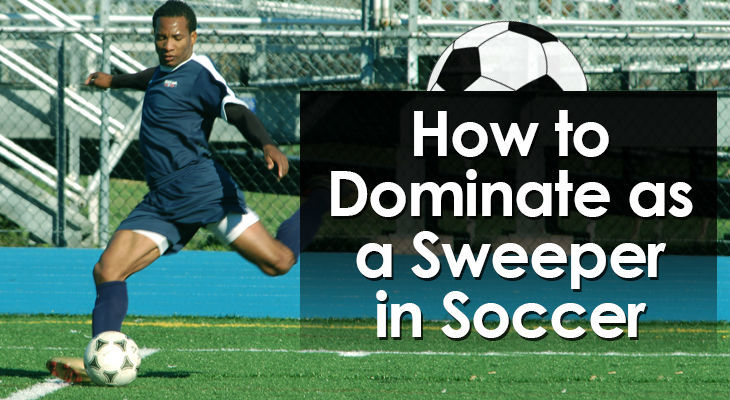What is a Sweeper in Soccer? (Full Position Guide)
A sweeper in soccer was once a very popular position, even at the highest level.
During the 1960s and 70s, it revolutionized the game - leading the way for more "hybrid positions" to make their way into the game.
Playing just behind the centerbacks, the sweeper has somewhat of a free role in the sense that they don’t mark a specific player.
Instead, they "sweep" across the defense... cleaning up any loose balls or putting in last-ditch tackles if the opposition gets in behind.
So, if you want to sure up your backline with a new age twist on a throwback position, here is everything you need to dominate as a sweeper in soccer.
What is a Sweeper in Soccer?
The sweeper position was popularized in Italian soccer during the 1960s when it was referred to as the “libero.”
Libero means *free* in Italian, indicating that this player had the liberty to roam the backline, getting involved wherever necessary.
Rather than form part of a rigid backline, the sweeper would sit deep and rely on their ability to read the game to cover open spaces, intercept through balls, and snuff out attacks.
On the ball, sweepers are essentially the spare player and must make themselves available to receive passes from the goalkeeper or centerbacks.
If your team struggles to build from the back effectively, playing with a sweeper is a simple but effective solution.
With so much freedom, this position seems easy to play in, right?
Not exactly...
It requires exceptional positional sense, fast decision-making, and top-tier technical skills.
Otherwise, playing with a sweeper is effectively a waste of an outfield player.
In many cases, a sweeper takes on the role of a deep-lying playmaker.
Because of their unorthodox starting position, they’re frequently afforded time and space to make long passes or forward runs from the backline.
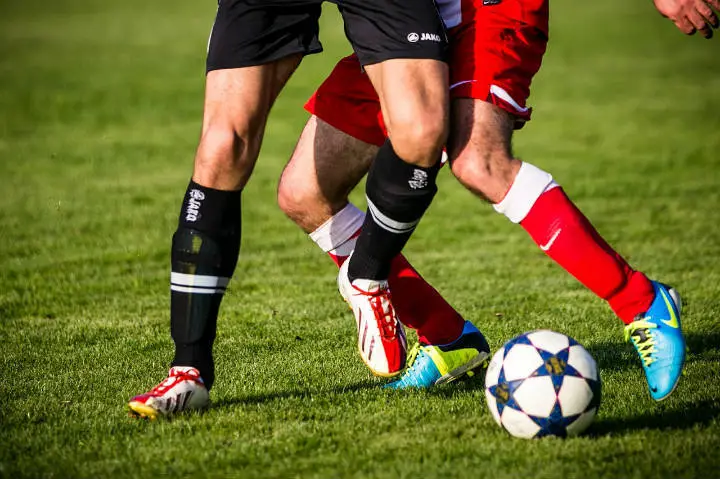
Position of a Sweeper in Soccer
In some ways, a sweeper is like an old-school version of a center defensive midfielder (CDM). But instead of sitting in front of the back four, they drop in behind.
Their starting position is typically central -- forming a defensive diamond and ensuring they’re ready to react at any time.
However, once the game is in motion, the sweeper’s role is quite fluid.
They use their in-game intelligence and anticipation to sense where any danger might come from and get into a position from which they can stop it.
For the majority of the match, the sweeper moves laterally with the backline and barks out positional instructions to teammates.
They can see everything from their position, so it’s vital that they lead from the back.
When needed, the sweeper abandons their central post to offer support to teammates.
While it’s important for sweepers to take advantage of their positional freedom, discipline is necessary to avoid being caught out of position when the opponent attacks.
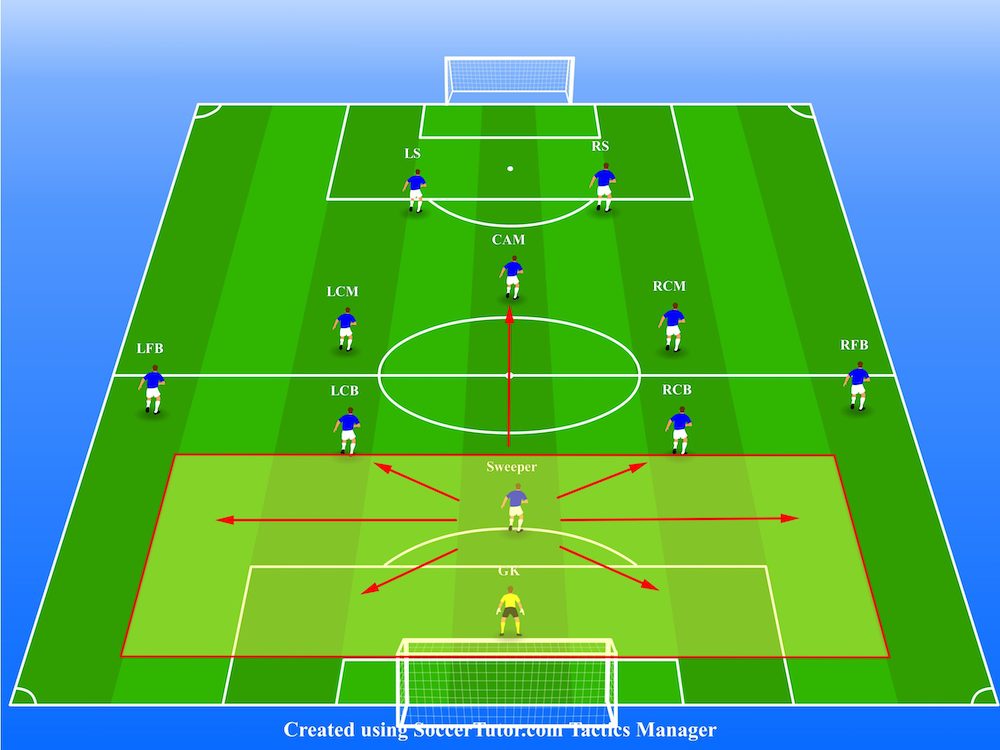
What Does a Sweeper Do in Soccer?
A sweeper has a number of key roles in attack and defense.
As well as being the last line of defense, they must also offer on-the-ball competencies and possess playmaking skills to break through the lines.
Here’s a closer look at the most important responsibilities of an effective sweeper:
Sweeper's Role in Defense:
#1 - Covering Space Behind the Defensive Line
The biggest threat to a high defensive line is the space they leave behind them.
Most teams attack with quick strikers that constantly look to make darting runs on goal.
The sweeper acts as a safety net behind the primary centerbacks and fullbacks, covering any open space the opposition can exploit.
This is where intelligent use of their free role becomes crucial.
Without having specific patterns of movement or set zones to operate in, the sweeper has to leverage their ability to read the game to ensure they offer adequate cover.
The mere presence of a deep-lying defender may deter a team from playing long passes into space.
#2 - Anticipating Runs Behind the Defense
A sweeper can go long periods in a game without directly affecting it.
During low-action stretches, the sweeper reads the game, takes note of movement patterns, and positions themselves to engage with any forward runners.
Since the sweeper doesn’t have a fixed position, they can move themselves into an area that they anticipate a pass or run might come into.
Good anticipation ensures the libero can either intercept an incoming pass, clear a through ball, or directly engage an attacker who gets on the end of a pass.
Anticipation is EVERYTHING for a sweeper.
Failing to read the game effectively will result in the concession of big chances that inevitably lead to goals.
#3 - Last-Ditch Tackling and Interceptions
The sweeper is the final obstacle between a striker and a shot on goal.
They’re given the responsibility of putting in last-ditch tackles or blocks to prevent the opposition from scoring.
Tackling in these situations requires patience, timing, and discipline. Recklessness in the final third may result in penalties or free kicks in dangerous areas.
As the “last man back”, the sweeper runs the risk of being sent off with every tackle.
#4 - Defensive Communication and Organization
It’s important for the sweeper to be a good communicator and lead from the back.
Their deep starting position means they can watch the entire game unfold, allowing them to pick up on routines or runs.
The sweeper should be in constant communication with teammates to make sure everyone is in the right positions and picking up any loose players.
Sweepers cannot afford to ball watch and must have their heads on a swivel for 90 minutes, week in and week out.
Sweeper's Role in Attack:
#5 - Recycling Possession
One of the sweeper’s most important roles is to help their team recycle possession.
As the free player, they must make themselves available to receive passes from teammates - especially the goalkeeper and centerbacks.
When a defender comes under pressure from a pressing attacker, the sweeper should drop into space to offer a passing outlet.
Although the sweeper is a defender first, they must possess exceptional technical skills and be comfortable making all types of passes.
From short balls to centerbacks to long diagonals across the field.
This is one of the key differentiators between a sweeper and any other centerback.
#6 - Deep Playmaking
Much like a CDM, a sweeper often finds themselves in space inside their own half.
Getting into these types of positions can be extremely advantageous if the sweeper has the technical skills to do something positive with the ball.
Having the vision and ability to switch the play or make a line-breaking pass allows sweepers to dictate the flow of the game from behind the backline.
#7 - Making Surging Runs
Since they’re granted quite a lot of freedom, great sweepers often carry the ball out of defense, surging forward to instigate attacks.
With no definitive marker, sweepers can make up tremendous ground in their opponent’s half - drawing defenders and creating space for teammates.
Franz Beckenbauer often leveraged the element of surprise by making sharp runs from his deep position upfield into attacking positions.
Although this tactic leaves gaps in the defense, it’s a highly effective tactic at creating numerical overloads and opening up space for teammates.
The key to doing this effectively is timing.
Top players can recognize the right and wrong times to make these types of runs.
A single misjudgment can leave the defense totally exposed to a counterattack.
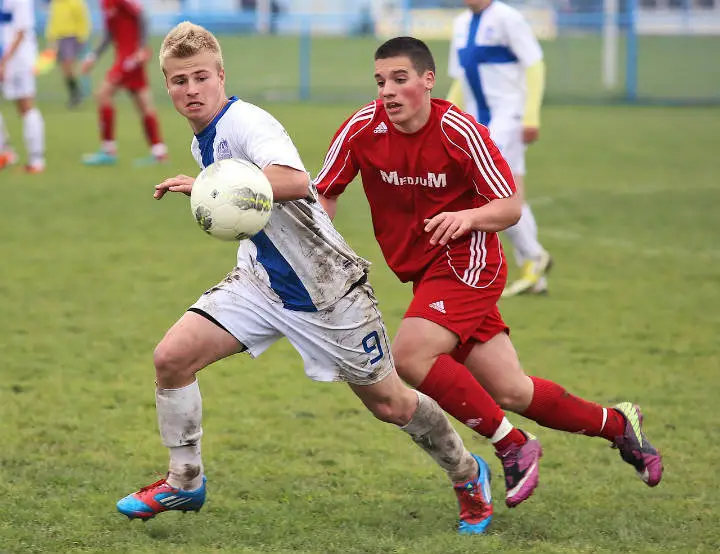
7 Key Traits of a Sweeper in Soccer
While a sweeper is technically a defender, the niche position is very nuanced and requires a highly refined skill set.
Below, I’ve outlined 7 key traits to work on to help you dominate as a sweeper.
a. Excellent Technical Skills
The sweeper is no average defender…
They’re integral to build-up play and get involved in attacks repeatedly. This requires excellent on-the-ball fundamentals like first touch, ball control, passing, and dribbling.
Good passing technique often sets the best from the rest when it comes to liberos.
Defensively, there’s little margin for error for sweepers. They should also have refined defensive techniques, like tackling, blocking, marking, intercepting, and heading.
b. Elite Reading of the Game
As a player who thrives on instinct, having the ability to read the game is fundamental to success in the sweeper role.
Remember, this goes two ways...
As well as anticipating runs and passes from the opposition, sweepers must also recognize opportunities going forward.
Sweepers must learn the right times to make a short pass, a searching ball, or a forward run.
As tempo dictators, it’s also important that they know when to speed up the game and when to slow it down.
Although some of this comes naturally, sweepers can improve this area of the game by studying the greats and being attentive listeners during tactical coaching sessions.
c. Positional Sense
Positional sense is closely related to reading the game.
By anticipating what’s going to happen on the field, a sweeper can position themselves correctly, in turn increasing their chances of success.
Moreover, because a sweeper is given a free role, it’s imperative that they’re in tune with what’s going on in order to be in the right place.
Key actions performed by a libero in any given match include:
Lateral movement to snuff out a through pass, dropping deep to head away a long ball, or advancing from the back line to add numbers in midfield
Again, studying patterns of play and learning from the best are extremely effective ways of improving positional sense.
d. Quick Thinking and Decision Making
Sweepers are decision-makers and must commit to their decisions on the field.
Whether the choice is to stay or go, take a touch, keep the ball, or punt it clear, quick thinking and good decision-making are vital in defensive scenarios.
Any hesitation invites pressure from the opposition, putting the goal at risk.
The quicker they make their choice, the more clinical they can be in mounting an attack.
e. Good Communication
Without sounding repetitive, I can’t stress enough how important it is for sweepers to be excellent communicators.
In fact, they’re often referred to as on-field coaches.
Leading from the back, they must use this vantage point to their benefit and offer instructions to teammates regarding their positioning or opposition runners.
Communication shouldn’t be just yelling, however...
A sweeper’s instructions must be concise and direct to ensure the job gets done.
f. Speed and Stamina
The player filling the sweeper position needs pace and power as they provide cover and safety across the backline.
They will find themselves chasing down speedy strikers and competing with fast wingers for over-the-top passes, so they must have the legs to keep up.
Good acceleration also comes in handy when advancing into the final third in attack.
As well as having blistering pace, a sweeper needs the stamina to match it.
One chance can change a game so sweepers need the fitness to last an entire 90 minutes.
g. Timing
As the last player on defense, the sweeper is the team’s get-out-of-jail card when an opponent is able to escape their defender.
This is a huge responsibility.
The sweeper must judge situations perfectly and use their knowledge of the game to either delay the opposition until their teammates arrive, or intervene themselves.
When they do choose to take on a player directly, timing is key.
If a sweeper misreads the opposition and gets their tackle timing wrong, it could result in a goal or a red card.
Best Sweepers of All Time
As a position that doesn’t have much relevance in the modern game, my list of top sweepers is a throwback to previous eras.
Yet still, there’s no doubt that the skill sets of each of these players can be applied to a new team, either as a centerback or a CDM.
- Franz Beckenbauer
- Franco Baresi
- Bobby Moore
- Gaetano Scirea
- Ronald Koeman
- Matthias Sammer
- Daniel Passarella
- Alessandro Nesta
- Lothar Matthäus
- Armando Picchi
5 Bonus Tips for Sweepers
A sweeper is a highly specialized role that not everyone can play.
If you’ve been assigned this role for your team, here are some pro tips to help you make immediate improvements.
Tip #1: Work on Your Mental Game
Playing as a sweeper involves a lot of pressure, which can sometimes lead to mistakes.
Work on your mental game by maintaining focus throughout every training session.
Analyze games and practices to make sure you learn from your mistakes.
Focus and a growth mindset will work wonders on your mentality and help you become a far more confident player.
Tip #2: Be a Communicator
As a libero, you must be a strong communicator on the field in games and training.
If this isn’t something you usually do, work on it and make it a permanent habit.
With the entire field ahead of you, it’s your responsibility to alert your teammates to any danger and dictate the positions that they take up.
By speaking to the players around you, you can improve the shape of the team, instill confidence in your teammates, and prevent gaps from opening up.
As a byproduct, your focus will also improve.
Tip #3: Practice Patience and Discipline
Whether on the ball or facing a striker one-on-one, timing and patience are key.
By having faith in your own abilities, you can stand off the striker and force them to take you on, or you can lunge in and make the perfect tackle.
As the last line of defense, you must be disciplined and avoid making rash challenges that could result in a red card or a goal.
Patience and discipline are also important when you have the ball.
If you can’t find a progressive pass, simply knock the ball back to the keeper and start again.
Don’t force it.
Be patient and wait for the perfect moment to drive up the pitch.
Tip #4: Build Your Fitness
Sweepers in soccer require a high level of endurance.
As you need to be mobile and athletic, you must work on these aspects in your training to stay effective throughout games.
Incorporating a variety of speed and agility drills can help this considerably.
Good stamina makes all the difference in the dying moments of a close match.
Tip #5: Become a Student of the Game
In the modern era, young soccer players have an abundance of free resources available.
Leverage YouTube and soccer blogs (like this one) to find tips and advice on how to hone your skills.
Become a student of the game, even if it involves spending 30 minutes per week watching highlight videos.
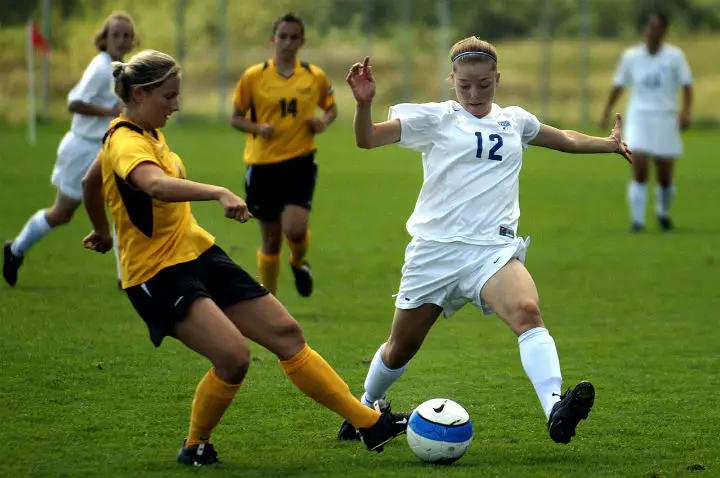
Conclusion
Very few positions in soccer give you the license to play virtually anywhere on the pitch.
Sweeper is undoubtedly one of the more fun positions to play and it allows you to get involved with virtually every aspect of the game.
I hope this guide will help you on your way to becoming a dominant sweeper on your team.

